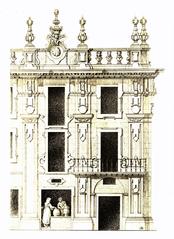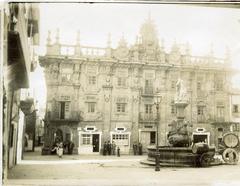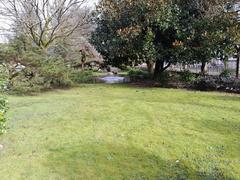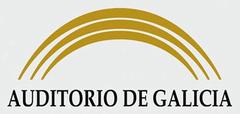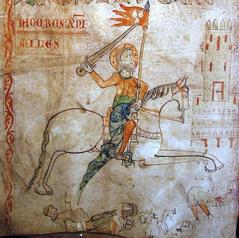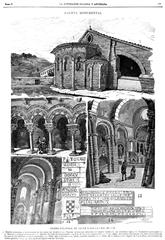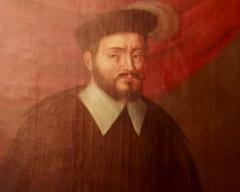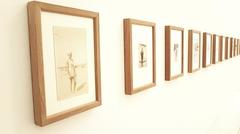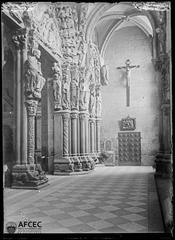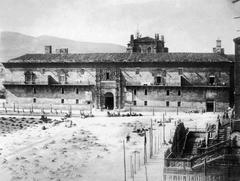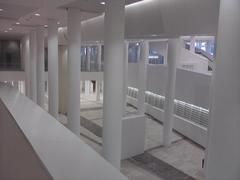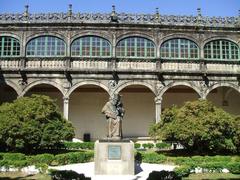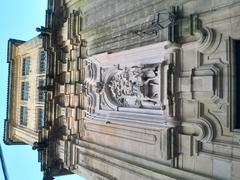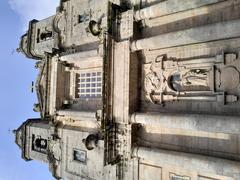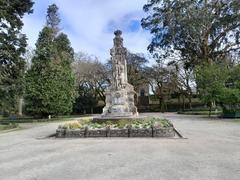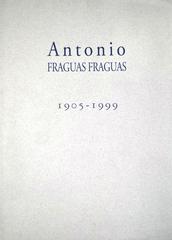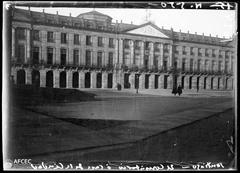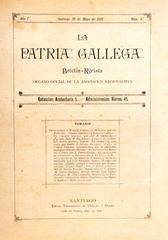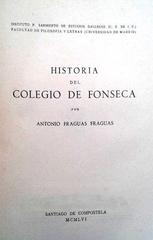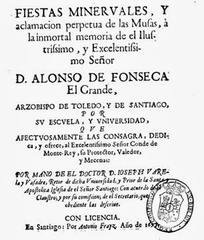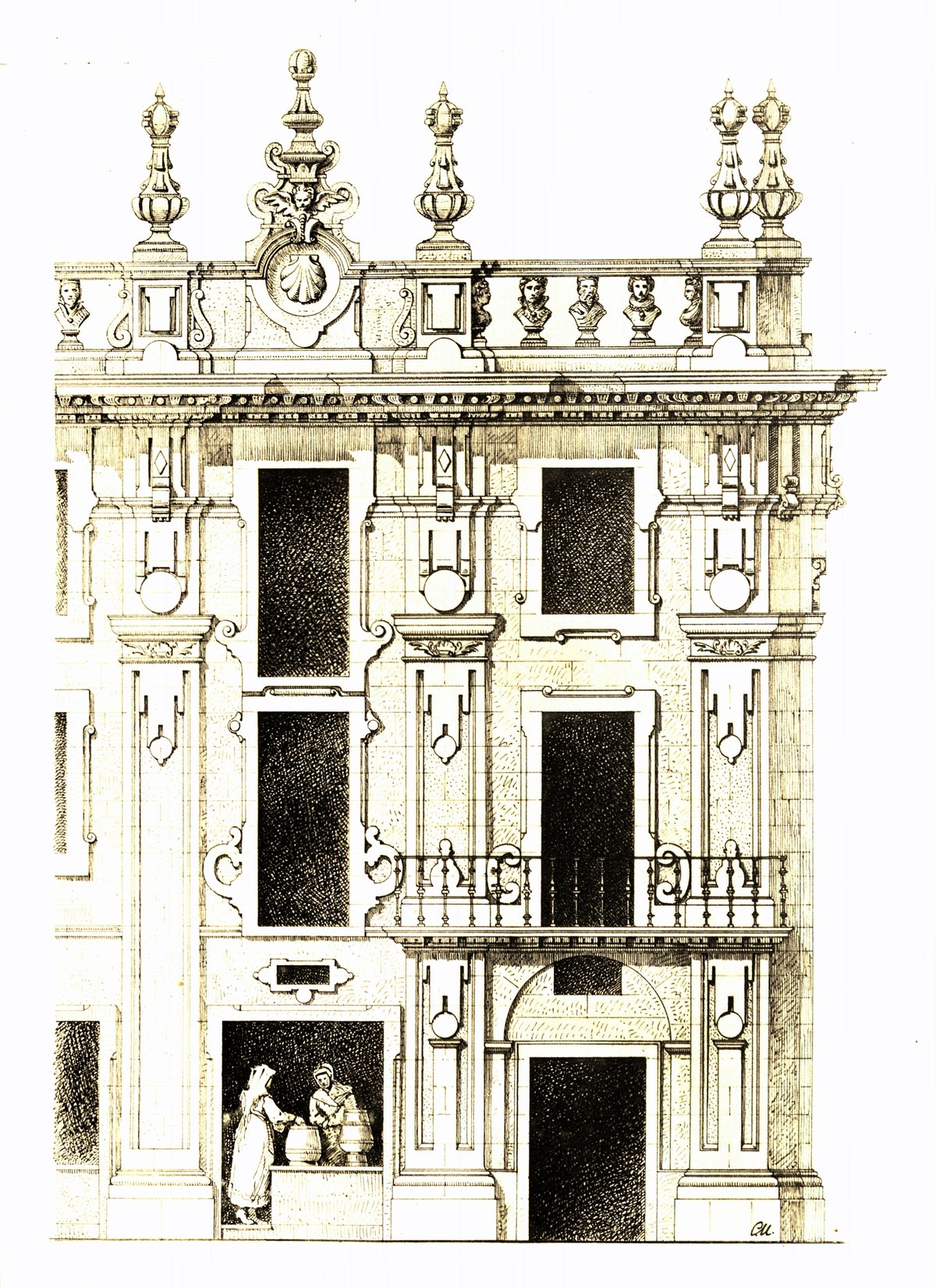
Casa del Cabildo: Visiting Hours, Tickets, and Santiago de Compostela Historical Sites Guide
Date: 14/06/2025
Introduction
Casa del Cabildo, a jewel of 18th-century Galician Baroque architecture, stands at the heart of Santiago de Compostela, offering visitors a unique blend of historical, artistic, and literary significance. Designed by Clemente Fernández Sarela and completed in 1758, this iconic building was conceived to complement the south façade of Santiago Cathedral and provide a harmonious, theatrical closure to the Praza das Praterías. Despite its shallow depth, Casa del Cabildo’s richly adorned façade projects an illusion of grandeur, cementing its role as both a symbolic and physical centerpiece of the square.
Throughout history, the building has evolved from an ecclesiastical meeting hall to a dynamic cultural space, hosting exhibitions and events that celebrate Santiago’s heritage. Its evocative presence has inspired literary figures like Federico García Lorca and Ramón María del Valle-Inclán, anchoring it within the city’s cultural identity. This guide delivers comprehensive details on Casa del Cabildo’s visiting hours, ticketing, restoration, accessibility, and neighboring attractions, ensuring an enriching experience for every visitor. For further exploration, consult official tourism resources and curated itineraries that capture the spirit of Casa del Cabildo (Turismo de Santiago; Spain.info; Santiago Turismo).
Contents
- Introduction
- Historical Context and Urban Integration
- Architectural Features and Design
- Restoration and Preservation
- Modern Role and Visitor Experience
- Literary and Cultural Significance
- Practical Visitor Information
- Nearby Attractions
- Frequently Asked Questions
- Conclusion and Recommendations
- Sources
Historical Context and Urban Integration
Casa del Cabildo was commissioned by the city council at a time of urban renewal in 18th-century Santiago. Its construction was pivotal in harmonizing and closing the southern side of the Praza das Praterías, enhancing the urban landscape and creating a dramatic visual counterpart to the cathedral (Turismo de Santiago). The building’s name, “Cabildo,” refers to its original function as a meeting place for the cathedral chapter, reinforcing the close relationship between ecclesiastical and civic authority.
Architectural Features and Design
Façade and Baroque Elements
Despite being only about 3.5 meters deep, Casa del Cabildo’s façade is a masterpiece of Baroque illusionism. Key features include:
- Symmetrical Layout: Three vertical bays with a central entrance, flanked by pilasters and crowned with balconies.
- Wrought-Iron Balconies: Distinctive of the Baroque period and enhancing the building’s elegance.
- Heraldic Shield: A prominent coat of arms representing Santiago de Compostela, adding civic symbolism.
- Rich Ornamentation: Scrolls, floral motifs, and decorative cornices create depth and visual drama.
This façade, sometimes described as a “stage set,” is integral to the ceremonial and urban character of the square (Spain.info; Turismo de Galicia).
Interior Adaptation
Originally designed for administrative and residential purposes, the interior has been adapted to house municipal exhibition spaces following its restoration. It now provides a venue for art, history, and cultural exhibitions related to Santiago and the Camino de Santiago (Concello de Santiago).
Restoration and Preservation
2011 Rehabilitation
After years of weathering and structural decline, Casa del Cabildo underwent a significant restoration in 2011, led by the Consorcio de Santiago. Objectives included:
- Structural stabilization and façade restoration
- Conservation of Baroque stonework and ornamentation
- Modernization for exhibition use
- Improvements for accessibility, including ramps and lifts
The project, funded by municipal, regional, and European grants, was lauded for its balance of historical authenticity and contemporary functionality (Consorcio de Santiago).
Modern Role and Visitor Experience
Exhibition and Cultural Space
Casa del Cabildo now functions as a dynamic venue for exhibitions and cultural programming, often collaborating with Santiago’s museums and cultural institutions. The building plays a key role in local festivals and art events (One Day Itinerary).
Visiting Hours and Tickets
- Open during exhibitions: Tuesday to Saturday, 10:00–14:00 and 16:00–20:00 (summer afternoons may extend to 17:00–21:00); Sunday, 11:00–14:00; closed Monday.
- Admission: Generally free during exhibitions; no advance ticket is required (Santiago Turismo).
- Accessibility: The building is wheelchair accessible, with ramps and lifts installed during restoration.
Visitor Amenities
- Multilingual exhibition materials
- Location in a lively, pedestrian-only historic center, close to amenities and cafés
Photographic Opportunities
The façade is especially photogenic in the late afternoon light; the surrounding Praza das Praterías offers panoramic vistas ideal for photography enthusiasts.
Literary and Cultural Significance
Casa del Cabildo holds a special place in Spanish literature and culture. Federico García Lorca, inspired by the building and the nearby Italianate fountain, wrote “Danza da Lúa en Santiago” during his Galician sojourn (CVC Cervantes). The building also appears in the works of Ramón María del Valle-Inclán and in cinematic adaptations, reinforcing its stature as a symbol of Santiago’s Baroque identity (Santiago Turismo).
Practical Visitor Information
How to Get There
Casa del Cabildo is located at 2 Plaza de las Platerías, easily reached on foot from Santiago’s cathedral, main squares, and the Old Town. Vehicle access is restricted; parking is available outside the historic center (GoAskALocal).
Tips
- Best Time to Visit: During exhibitions for interior access; the façade can be admired year-round.
- Language: Exhibitions mainly in Spanish and Galician, with some English translations.
- Facilities: The building has limited visitor facilities; public restrooms and cafés are nearby.
Nearby Attractions
- Santiago Cathedral: The city’s spiritual and architectural centerpiece, steps from Casa del Cabildo (PlanetWare).
- Plaza de las Platerías: Historic square with the Fonte dos Cabalos fountain, a source of literary inspiration.
- Pazo de Xelmírez: Romanesque civil palace adjacent to the cathedral.
- Hostal de los Reyes Católicos: Historic pilgrim hostel, now a luxury hotel.
- Raxoi Palace: Neoclassical city hall facing the cathedral.
- Museum of Pilgrimage and Santiago: Exhibiting the history of the Camino and the city.
- Monastery of San Martín Pinario: Baroque monastery and church.
- Mazarelos Arch: The only surviving city gate from medieval walls.
Frequently Asked Questions (FAQ)
Q: What are Casa del Cabildo’s visiting hours?
A: Hours vary with exhibitions but typically are Tuesday–Saturday 10:00–14:00 and 16:00–20:00 (or later in summer), Sunday 11:00–14:00, closed Monday. Confirm on official sites before visiting.
Q: Do I need a ticket?
A: Admission is generally free during exhibitions; tickets are not usually required.
Q: Is Casa del Cabildo accessible?
A: Yes, it is equipped with ramps and lifts for wheelchair users.
Q: Can I join a guided tour?
A: Many walking tours of Santiago’s Old Town include Casa del Cabildo and provide historical context (GPSmyCity).
Q: Can I photograph the façade?
A: Yes, photography is encouraged.
Conclusion and Recommendations
Casa del Cabildo is a testament to Santiago de Compostela’s rich cultural and architectural heritage, blending Baroque artistry, literary inspiration, and vibrant community use. Its 2011 restoration preserved not just a building, but a living part of the city’s identity. Free admission during exhibitions, accessible facilities, and proximity to major historical sites make it an essential stop for travelers and locals alike.
To plan your visit, check the latest hours and events on official tourism sites and consider using the Audiala app for guided tours and real-time updates. Discover more about Santiago’s history by exploring nearby landmarks, joining a walking tour, or attending an exhibition at Casa del Cabildo.
Sources and Further Reading
- Turismo de Santiago - Casa del Cabildo
- Santiago Turismo - Casa do Cabido
- Consorcio de Santiago - Restoration
- Spain.info - Casa do Cabildo
- CVC Cervantes - Literary Walk: Casa del Cabildo
- One Day Itinerary - Santiago de Compostela
- GoAskALocal - Travel Guide to Santiago de Compostela
- GPSmyCity - Casa do Cabildo
- PlanetWare - Santiago de Compostela Attractions
